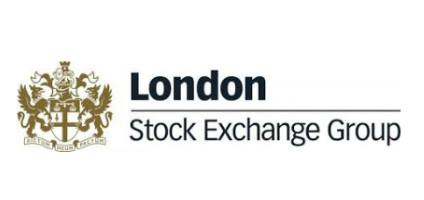LSE’s model

Breaking away from the traditional vertically integrated "silo", the London Stock Exchange Group is building its growth from a new open-access model.
- Intro: market structure
Contrary to what we may think, stock exchanges and manufacturing plants have a lot in common. Similar to a product moving along an assembly line, electronic orders to buy or sell securities are received by the exchange and then flow through various systems to be matched, netted, cleared and settled. Also, the number of messages the trading system can manage at once defines the bottlenecks of the overall process. At each point of the process (as described below in Diagram 1), fees are collected.
Most people identify trading with the act of deciding to buy or sell a security; however, the real operating complexity lies further down the chain. Most securities (stocks, derivatives such as options or futures) are “cleared”. This means that an institution called a clearinghouse seats in the middle of the two counterparties of a trade to be the buyer to every seller and vice versa. In other words, there is no bilateral trade between two traders but 2 trades with the clearinghouse, which then centralizes all positions and nets them off.
The largest exchanges in the world act as vertical silos: the same company operates the entire “production chain” from the trading to the settlement system. For instance, CME Group (largest exchange operator in the world) and Deutsche Börse (3rd largest) not only own the (upstream) trading infrastructure but also the (downstream) clearinghouse. This position allows them to act as a monopoly on specific products: if a trader wishes to trade a product available on CME (e.g: S&P futures), he/she musts also clear in CME’s clearinghouse – and pay fees for both.
- The case of the London Stock Exchange Group
The London Stock Exchange Group (LSEG) is a unique case in the exchange world. Instead of operating a vertical silo, it allows an “open access” at every stage to its various systems. Contrary to a trader on CME who is forced to perform all the downstream activities through the same CME-owned chain, a trader on LSEG can decide to trade on LSEG and clear somewhere else. It can also decide to trade somewhere else and clear with LSEG.
This may first sound odd: why would the exchange “shoot itself in the foot” and refuse to extract monopolistic-like rent by capturing the flow at the top of the chain and keeping it for itself?
- Business model and operating model alignment
The business model of the LSEG is a partnership model. In order to compete with larger exchanges such as CME or Deutsche Börse, LSEG puts its users first. Users of stock exchanges are large financial institutions such as investment banks or brokers. Most of them pay very large amounts of money to operators of the market structure such as CME (private companies, themselves listed on the stock exchange – unlike the “mutual” ownership model common in the 60s-80s). The vertical silo on which they operate acts as a barrier to entry, which usually translates in higher fees and lesser innovation.
By opening its infrastructure and giving the choice to its users to pick and chose which activity they want to perform with them, LSEG shows its clients that it operates in their best interest. The other effect is to force LSEG to stay lean and competitive, since it knows users will only use the exchange’s services as long as they are the best and cheapest – otherwise they will simply go somewhere else (something not possible on vertically integrated exchanges).
It is important to note that this has happened in a wider competitive context. Unlike CME or Deutsche Börse, LSEG is a relatively small player in the derivatives trading (<1% of global trading). As a new entrant, LSEG’s business model is simple: grab as much market share as possible as there is nothing to lose – and no existing business/dominant position to protect. This position certainly has driven its business model (user partnership) and in turn, its operating model (open access/horizontal model).
The share price of the company is a clear reflection of the successful alignment between business and operating models.
[1] http://www.lchclearnet.com/asset-classes/otc-interest-rate-derivatives





Very interesting post, Vincent – learned a lot about what goes on behind the scenes in a securities trade! Your discussion of the LSE’s open system vs. the closed system of CME has a lot of parallels in other industries (i.e. Google’s open source approach for Android development compared to Apple’s closed system for the iPhone).
It looks like LSE’s open access approach has allowed them to rapidly gain market share as a derivatives clearinghouse. How have their competitors responded to this approach? Have exchanges since shifted in terms of pricing or operating models? In the Google vs. Apple example for mobile development, Apple may have a closed model but still has many avenues to differentiate and innovate (quality of developer tools, user experience, hardware, etc.). With exchange operations, it seems like cost and speed are the two factors that matter the most. Are there other ways for exchanges to differentiate themselves and have CME and/or Deutsche Börse been effective in doing so?